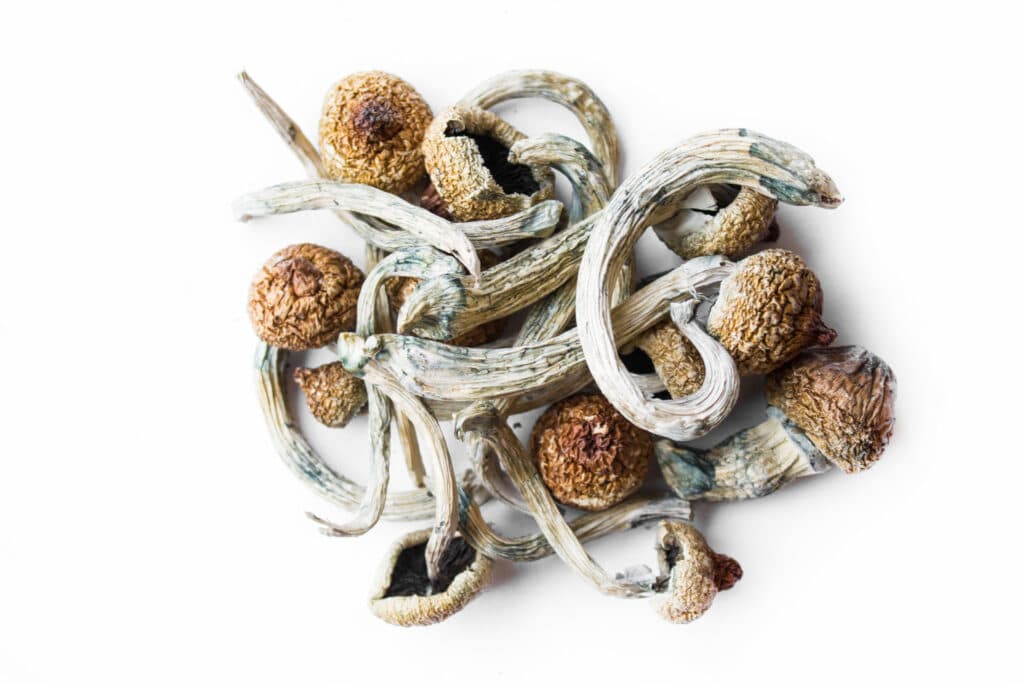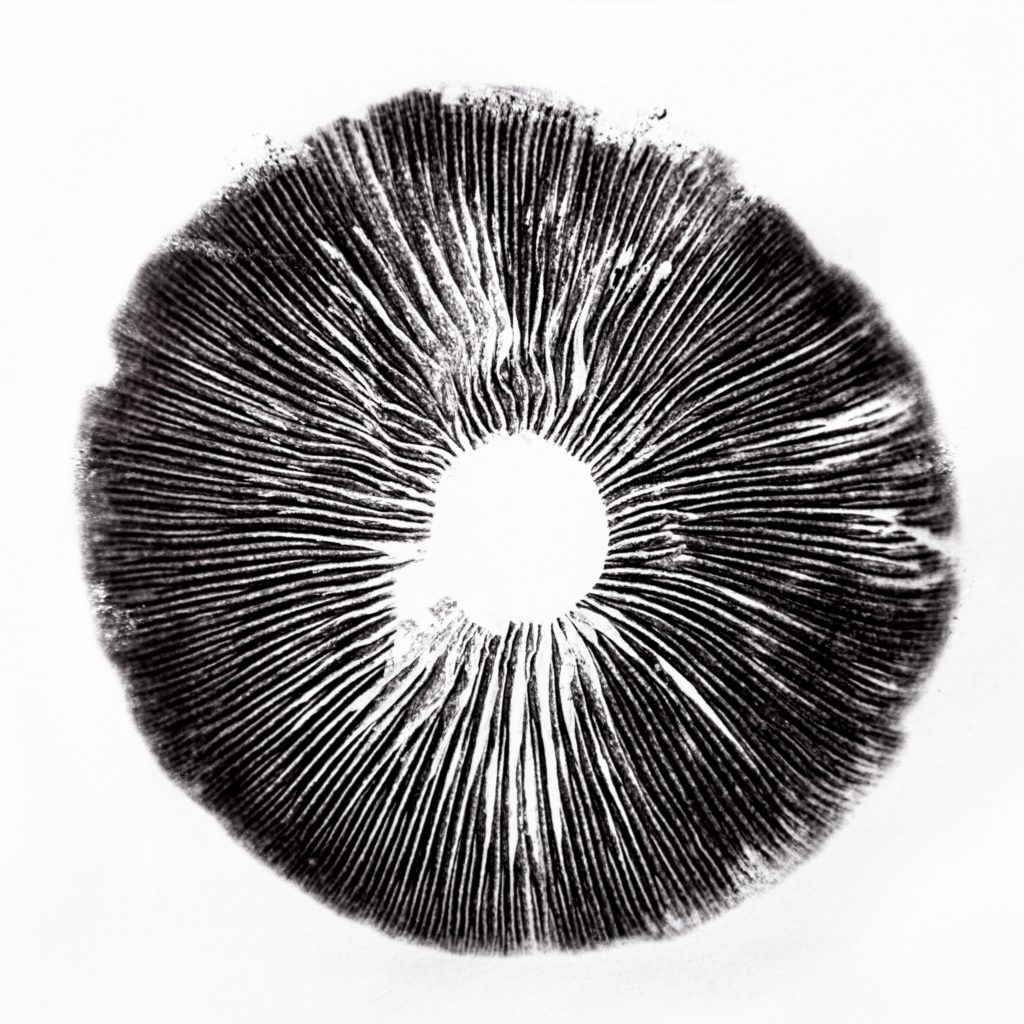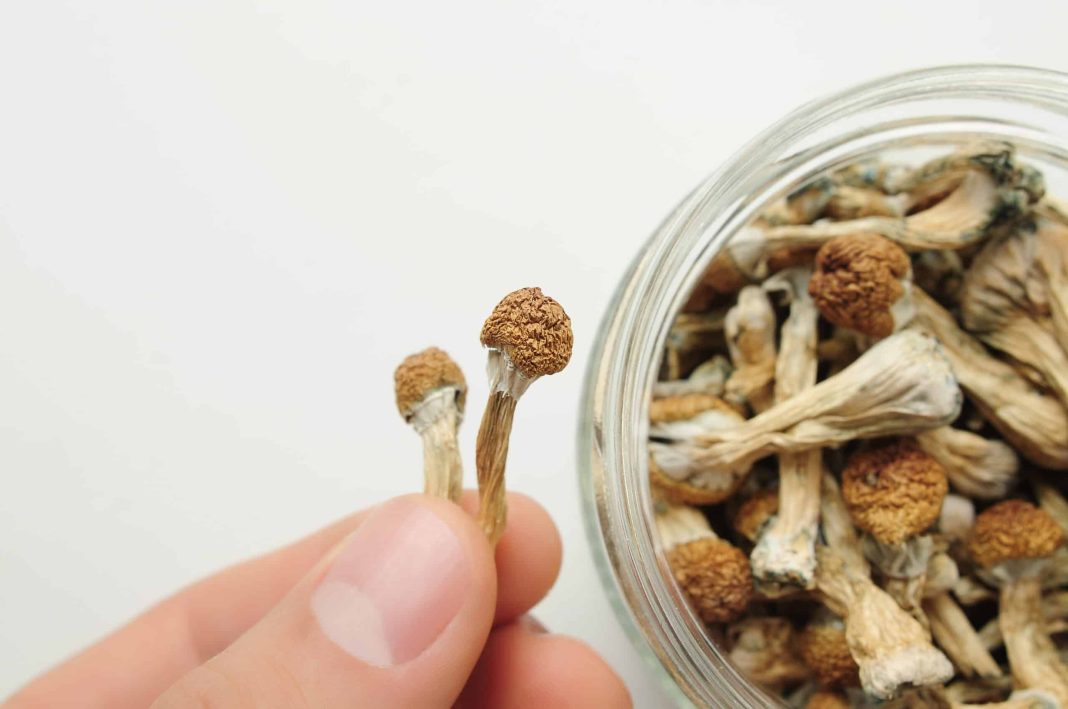Storing magic mushrooms and spores is vital to getting the most out of each. Both are very sensitive to the environment and susceptible to damage, which diminishes their alkaloid content, degrades the psilocybin in them, and makes them prone to decomposition. Keeping your shrooms and spores in the right conditions may sound like a tall order, but it’s much less complicated than one would assume; and it’s an absolute must for psychonauts, cultivators, and retailers alike.
Magic mushrooms and spores
Psilocybin mushrooms are a polyphyletic group of informal fungi containing psilocybin. There are a few different biological genera of psilocybin mushrooms such as Psilocybe, Panaeolus, Inocybe, Pluteus, Gymnopilus, and Pholiotina. There are many different types of psilocybin mushrooms – in total, 116 species have been documented. Out of those, the majority are found in Mexico (53 species), with a pretty even distribution throughout various other pockets of the world: Canada and the US (22), Australia and associated islands (19), Europe (16), Asia (15), and Africa (4).
Standard characteristics of these mushrooms include dark spores, small caps with dark gills underneath, and long, slender stems. They are often unassuming in color (shades of grey, brown, and white with hints of blue from the psilocybin production) and general appearance. Despite being found all over the world, there are some specific conditions in which they thrive, mainly subtropical humid forests.
Psilocybin mushrooms have a very long and colorful history, having been used spiritually and therapeutically in several indigenous cultures. They were depicted in Pre-Columbian sculptures and petroglyphs found in the Americas, as well as in Stone Age-era rock art in Africa and Europe.
Like other fungi, magic mushrooms reproduce by creating and releasing spores, which are single-celled structures similar to eggs. Each spore is capable of growing into a mushroom, and depending on the fungi in question, spores can be creating through either sexual or asexual reproduction (mushrooms are produced sexually). For sexual reproduction to occur, two mycelial colonies need to be close enough to each other that their hyphae can join and transfer genetic material.
Psilocybin mushrooms spores are legal throughout most of the US because the spores themselves don’t contain psilocybin or psilocin, the two compounds in magic mushrooms that are listed as Schedule 1 narcotics. In most states, only the fruiting bodies are illegal, so spores are safe in that regard. Currently, the only states that have bans on psilocybin spores are California, Georgia, and Idaho.
When you buy mushroom spores, they typically come in a large syringe which is suitable for injecting into grain bags or other types of spawn. Most spores are sold this way, including psychedelic, wellness/medicinal, and edible mushrooms. You can also find some strains on plates (which look like lab dishes) or slants (which resemble plastic test tubes), but many people prefer the convenience of syringes.
Storing your shrooms
Magic mushrooms aren’t a substance that most people use on a regular basis. So, if you buy a larger amount (an ounce or more, let’s say), you’re likely to have some leftovers after your trippy experience. Or if you’re growing mushrooms yourself, you know you’ll end up with a larger amount than one person can use in a single sitting. Either way, an oversupply of psilocybin mushrooms means they will need to be stored a certain way to ensure their longevity and potency. But how to store mushrooms and how long they last depends on a few different factors.
For example, freshly harvested mushrooms can be kept on a paper towel or in a paper bag in the refrigerator; but they will only last a couple of days. So if you don’t plan on using them immediately, your next step would be to dry them, either on a drying rack or in a dehydrator, until they are completely dry. Seriously, 100 percent dry as any moisture can cause the psilocybin in the shrooms to break down and degrade.

If you’re starting off with dried shrooms already, proper storage can keep them usable for about 1 year. Most people opt for airtight jars with a few silica gel packs thrown in there for good measure. They can also be stored in vacuum-sealed packages, which allows for more discretion since they’ll fit into much smaller and more inconspicuous places this way. If you don’t already have a vacuum sealer, you can find a new one and a pack of bags for about $25 at Wal-Mart.
The blue honey method
One interesting storage option that I’m going to try with my next flush is the “blue honey method”. The name blue honey comes from the blue hue magic mushrooms get when they are cut, however, the honey itself is not typically blue. To make blue honey, you take your dried mushrooms or truffles and grind them up as finely as possible. Then mix them into some high-quality, raw, unfiltered honey. Again, it’s extremely important that your shrooms be completely dry before grinding because any moisture can cause the honey to ferment.
Store the honey in an airtight container in a cool, dark place for at least one month, but preferably longer. Most psychonauts who opt for this method let it sit for about 3 or 4 months so the psilocybin can really infuse into the honey.
You can use the honey in tea, on deserts, or simply eat a few spoonfuls for a tasty, psychedelic treat. What’s possibly best about this method, is that it preserves the psilocybin indefinitely, as raw honey doesn’t degrade over time. If the honey ever starts clumping and crystalizing, just run the jar under some warm water and it goes right back to normal.
Storing your spores
Spore syringes can be stored at room temperature out of direct sunlight, or in the refrigerator. The latter option allows for prolonged storage. It’s best to keep your syringes in their original packaging until you begin your project, and make sure to clean your hands and wear gloves before handling.
It’s important to understand how long spore syringes can last in each environment. Typically, well-sourced, laboratory-grade syringes can be left out at room temperature for about 30 to 45 days. Activated, or germinated, spores can last much longer at regular temps, however. A recent discovery unearthed a single mycelium spore that had stayed dormant for over 250 years.

If you don’t plan on using your spores in the very near future, it’s best to keep them in the fridge. In cold, dark environments, spores can last up to a year. It’s important to remember that by cold, we do not mean frozen, as freezing your syringes can negatively impact the viability of the spores. Keeping spores in suboptimal conditions can affect their potency and germination capacity. When spores go bad, they will not be able to reproduce and grow mushrooms.
Another option to preserve spores for future use is by making spore prints. There are a few different ways to make spore prints, but the most common way is by using a piece of white paper or glass. First, you would take a fresh mushroom from your flush and remove the stem completely so that only the cap remains. Place it upside down on the glass or paper and leave it for at least a few hours, overnight if possible. You can tape the mushroom to the surface to help it stay in place.
Once the mushroom has released its spores, you can remove the tape and discard it. Gently dab away any moisture and place the spore print in a small envelope or Ziplock bag. Just like syringes, they’re best stored in a cool, dark place, preferably the refrigerator.
Final thoughts
Once more, proper storage is crucial to the potency and vitality of your product. To quickly summarize, both magic mushrooms and spores are best stored in cool, dark locations, and storing methods vary depending if you’re working with fresh or dry mushrooms. Spore syringes should be kept in their original packaging and mushrooms need to be in airtight and dry places, like a vacuum-sealed pouch or mason jar. So to make the most of your mushrooms and spores, make sure that storing options are a top priority.
Welcome drug enthusiasts! Thanks for coming by Cannadelics.com, where we serve up independent news on drugs at large; with a focus on cannabis and psychedelics. Don’t be a stranger, and come by regularly for updates. Plus, sign up to the Cannadelics Weekly Newsletter, for the best product promotions, along with the news.





